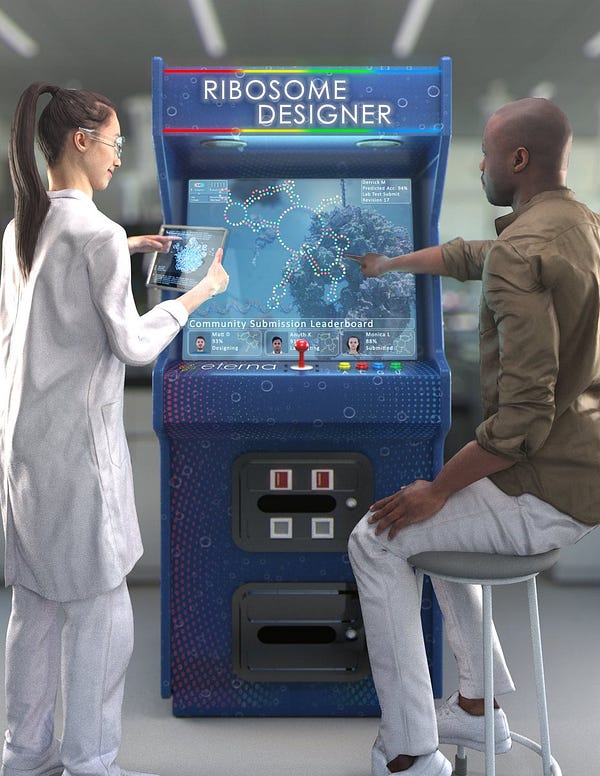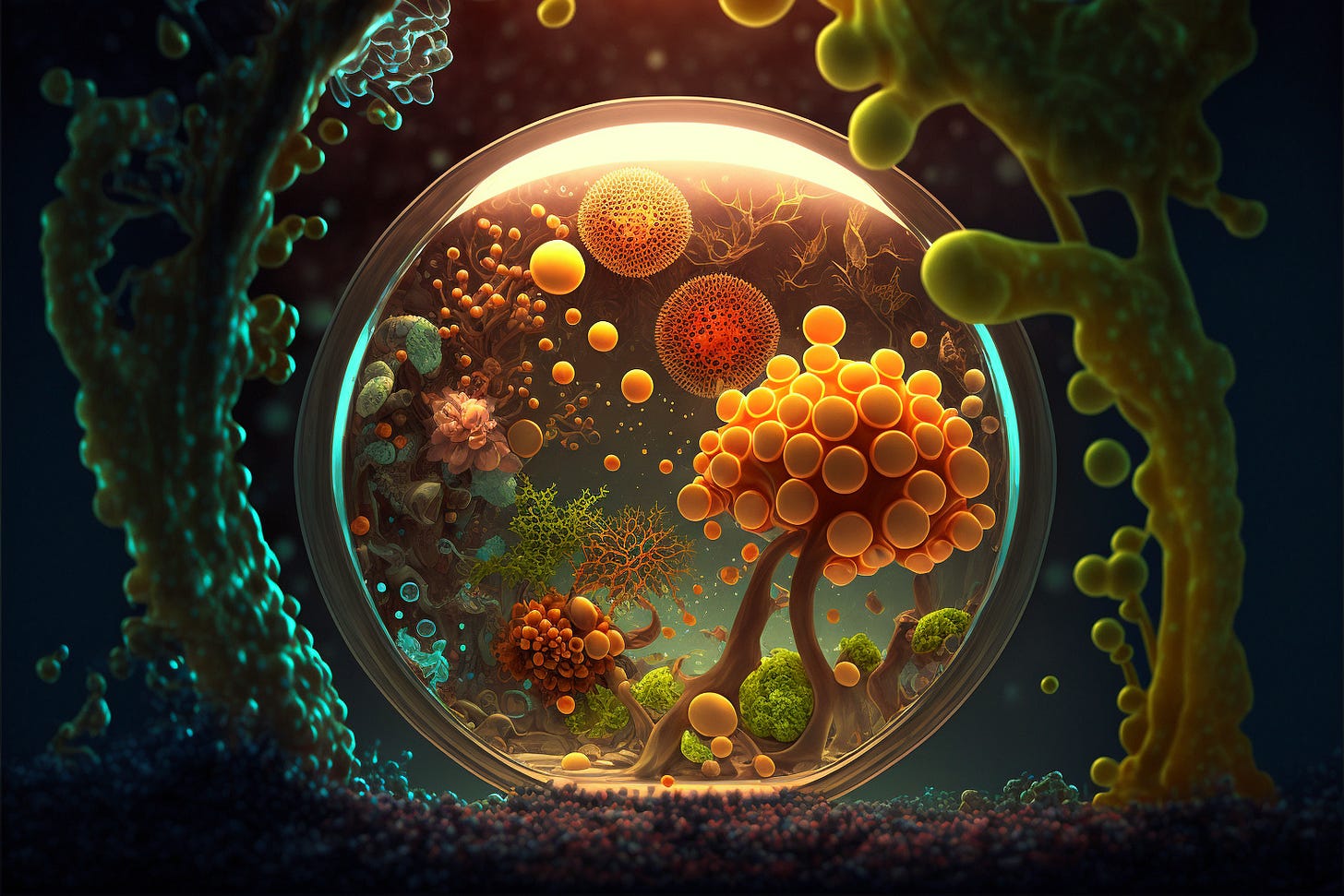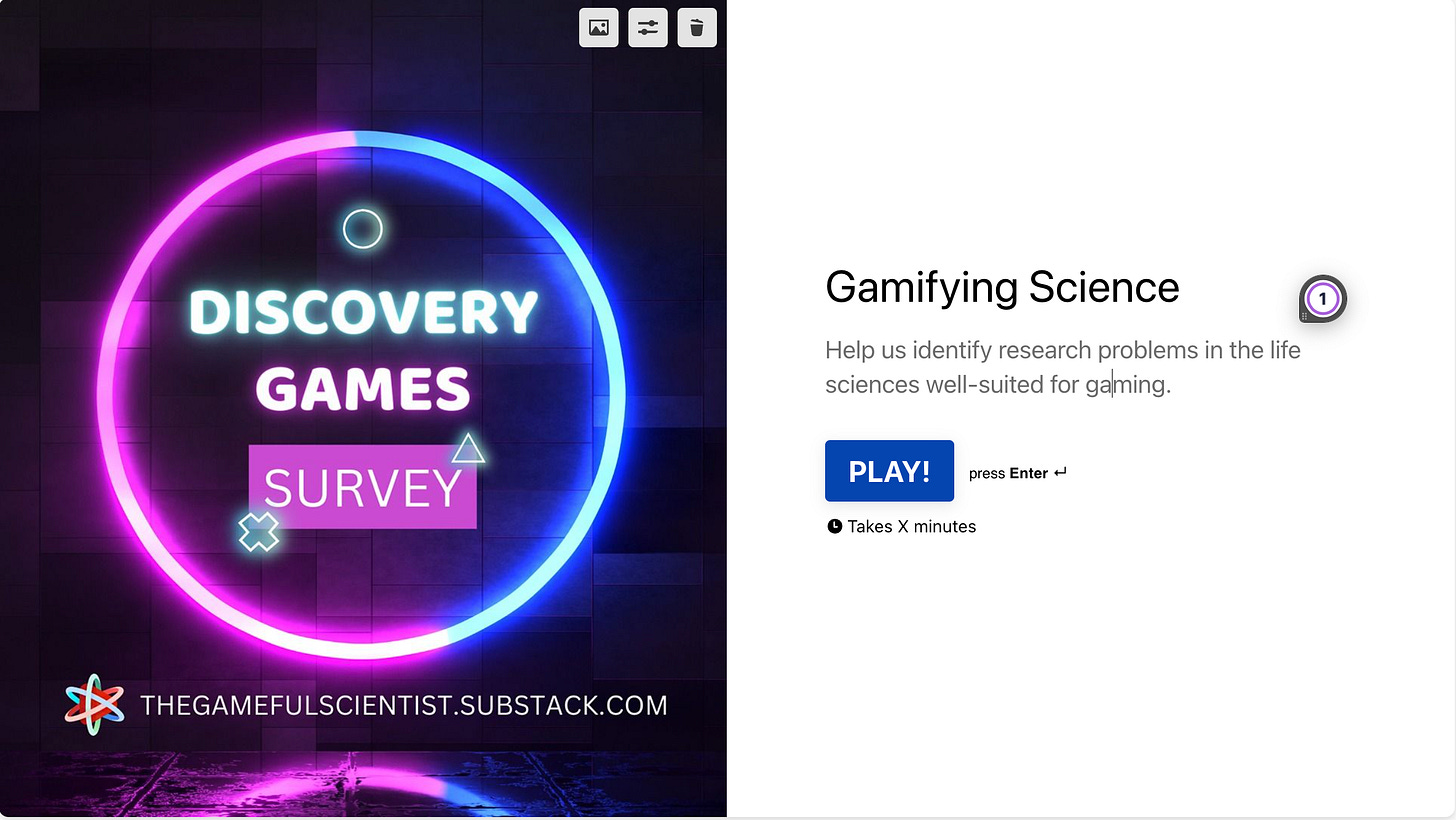Welcome to The Gameful Scientist! This newsletter explores the intersection of scientific discovery and creativity. Enjoy!
"What research problems can games actually solve?" With Level 1, we explored games that use the collective intelligence of players to solve scientific problems. But which problems are best-suited for this approach? Let's tap our community to find out.
In this article, we'll provide a framework for identifying research problems in the life sciences that are particularly well-suited for gaming. We'll also examine efficient and effective strategies for sourcing them. To help with this, we'll introduce a survey for you to share with your friends and colleagues.
Welcome to Side Quest 1.
The potential of games to drive scientific progress is promising, but not all research problems are well-suited for gaming. To identify which problems are, we need a framework that considers the characteristics of games and the needs of the scientific community.
Here are the key criteria:
Clear objective: The research problem should have a clear and easily understandable goal that players can work towards.
Example: In Eterna, players design RNA molecules that fold into specific shapes in order to contribute to scientific research.
Combinatorial: The research problem should have many possible solutions that require a combination of factors to find the best solution. Players will need to try different approaches to find the best solution.
Example: Identify the optimal combination of lifestyle changes (e.g., exercise, diet, stress reduction) for managing chronic pain.
Open-ended: The research problem should be open-ended, without a fixed solution. Players should be encouraged to generate new ideas and solutions.
Example: Investigating the underlying mechanisms of aging and age-related diseases.
High-impact: The research problem should have a significant impact on society. Players should feel motivated to work on problems that have a real-world impact.
Evergreen: The research problem should be valuable for scientific discovery through crowdsourcing and not likely to be solved by AI in the short term. Players should feel that their contributions will be useful for scientific discovery.
Decomposable and parallelizable: The research problem should be able to be broken down into smaller parts that can be worked on independently by different players. This allows many people to work on the problem at once and avoids duplication of effort.
Example: Training an AI algorithm to classify images of cancerous tissue samples as benign or malignant.
Complexity: The research problem should be complex and have multiple interacting variables. Players should be challenged and engaged by the complexity of the problem.
Example: Using generative AI to design novel proteins with complex structures and functions, unlocking new therapeutic applications
Uncertainty: The research problem should involve a high degree of unpredictability. This adds to the challenge of the problem and encourages players to work together to find solutions.
Example: Developing predictive models and novel strategies for the prevention and control of emerging infectious diseases, such as the Ebola virus.
Data-intensive: The research problem should require the analysis of large amounts of data. Players should be motivated to work on problems that require a lot of data analysis.
Example: Borderlands Science helps to analyze large amounts of genetic data from microbiome sequencing, providing researchers with new insights into the microbial communities living in the human gut and their effects on health.
Large-scale: The research problem should require many individuals to contribute to the solution. Players should feel that their contributions are part of a larger effort and that they are working together towards a common goal.
Example: Developing a citizen science project that collects data on air quality and respiratory health from thousands of individuals living in a densely populated urban area.
Which research problems fit within this framework? We explored several in Level 1.
A recent study by Drs. Rhiju Das and Michael Jewett's lab demonstrated that ribosome design could be crowdsourced through the game Eterna. Ribosomes are tiny structures that play a key role in making proteins in our cells. By using Eterna to design new ribosomes, scientists can gain insights into how proteins are made and develop ribosomes with new capabilities.


How do we source more?
Fill out our survey!
AI: Language models trained on biomedical literature extract important information from research papers based on user queries. By adding this framework as a filter to the AI system, we can prioritize research problems that meet the criteria of the framework. This allows for programmatically identifying research problems that fit within the framework for designing games to solve real research problems.
If this something you’re interested in helping with, message me!
Games are reimagining the way we make impactful discoveries. Join our community to discover the power of play! See you next week :)
Thanks for reading The Gameful Scientist! I’m experimenting with a new format for this article. I’d love to hear your thoughts below.
Feel free to contact me here or chat with me on Twitter @ATrotmanGrant :)



